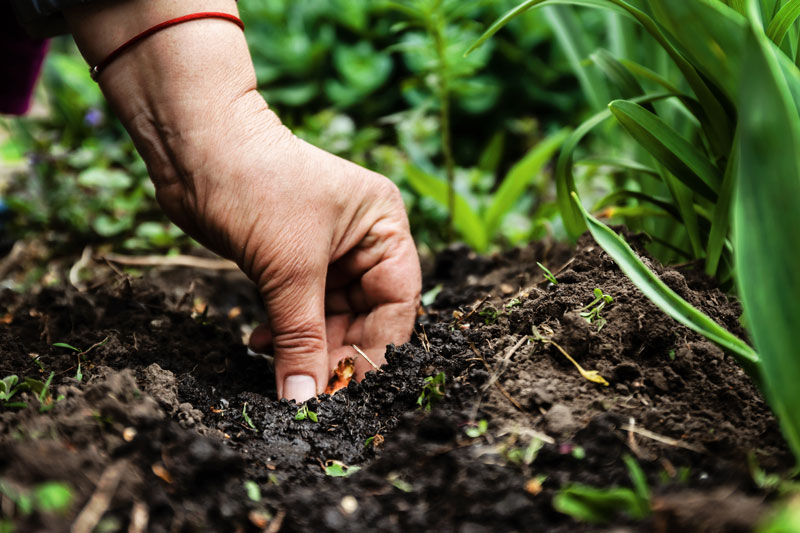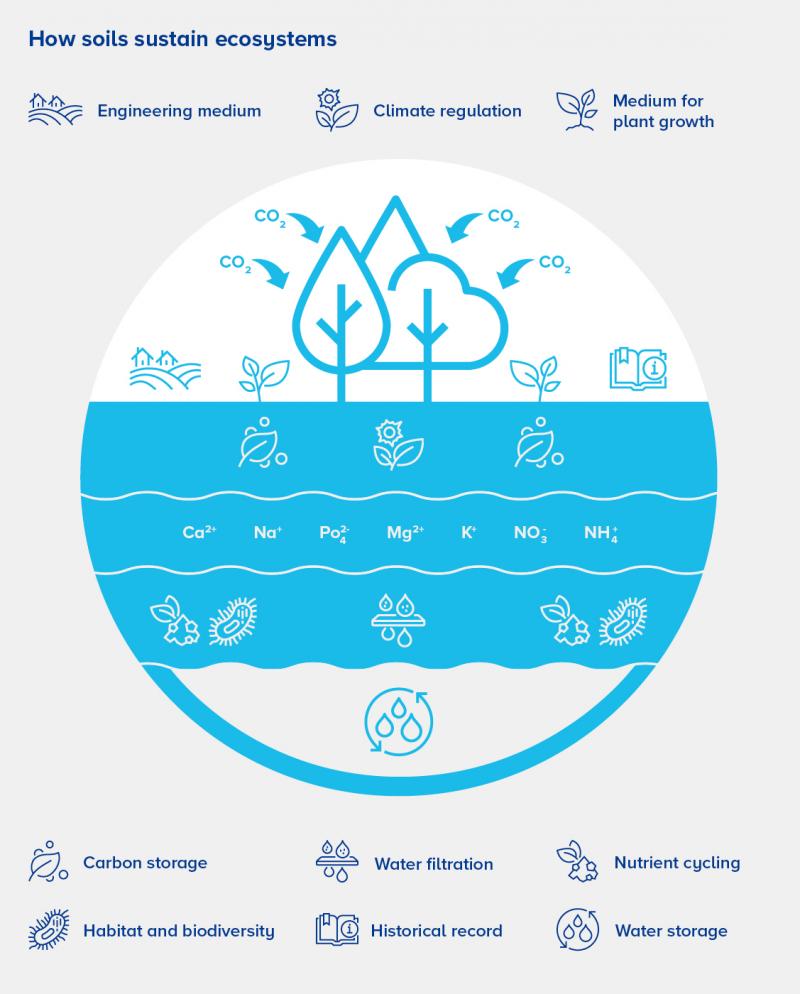How soil plays a significant role in climate action
November 24, 2022Apart from supporting our homes, buildings, infrastructure, and parks, as well as holding historical records of past climate, vegetation, and the rise and fall of civilisations, soil is one of the most underrated and little-understood wonders on our planet. The dirt beneath our feet is very much alive and a crucial part of climate action.
Soil is a diverse complex web of networks and communities working tirelessly together. Charles Kellogg was right when he said “Essentially, all life depends upon the soil. There can be no life without soil and no soil without life; they have evolved together.”
Soil is essential for climate action and needs to be protected
But it is not just about what soils can do for us. It is important that we value, appreciate, and protect soil so it can keep providing us with our life’s essentials.
It takes more than 100 years to build just 5 millimetres of soil. However, it takes just seconds to destroy, through chemical contamination, urbanisation, landslides, erosion, and more. Right now, we are losing soil 50 to 100 times faster than it can re-build. In Europe, 60-70 % of soils are considered unhealthy. Unfortunately, there is little data on soil. And even worse, it is poorly protected and regulated.
We grow on it, build on it, and build from it. It filters and cleans our waters, reduces flooding, and regulates our atmosphere. Soil is therefore essential to fighting climate change. It is one of the most biodiverse habitats on Earth and a vital part of our planet’s nitrogen and carbon cycles and thus also a crucial consideration for climate action. So, keep the dirt under your feet top of mind!
One teaspoon of soil holds more microorganisms than there are people on Earth
Ecologists have long known that the ground beneath our feet is home to more life, and more diverse life, than almost any other place on our planet. In fact, soil holds 25 % of the world's biodiversity and is a labyrinthine landscape of tunnels, cavities, roots, and decaying litter. In a single gram of soil, there can be as many as 50,000 life forms.

Underground residents range from microscopic bacteria and fungi and pencil-dot-sized springtails and mites. to centipedes, slugs, and earthworms that can reach several meters in length. Not to mention the moles, mice, and rabbits in their tunnels and dens. These animals and microorganisms perform an invaluable role.
Soil has built up a perfect habitat for many species and a perfect form of nutrient cycling, with worms, grubs, fungi, bacteria, and other decomposers involved every step of the way. Microbes feed on roots, while organic matter and organisms prey on each other, releasing nutrients for plant uptake.
Soil sustains our whole ecosystem
Understanding underground life is vital, as soil ecology is crucial to our whole ecosystem. It helps to transform the nutrient elements like carbon, nitrogen, phosphorus, and potassium that feed plants. Nutrient-rich soil allows food and forests to grow, which then absorb carbon dioxide and release oxygen.
Healthy soil is crucial to all raw materials that are the base of our global economy: food, fiber, flowers, fuel, pharmaceuticals, and more. Collectively, the subterranean communities form much of the basis for life on our planet, from the food we eat to the air we breathe.

One of the most overlooked creatures living in the soil is the earthworm. Earthworms journey down and around, creating breathing holes, like lungs in the soil. This creates space for plant roots to grow and keeps the soil alive.
Besides animal life, there are also vast and intricate webs of fungal threads. Plants and fungi need each other to thrive. Fungi cannot capture CO2 to grow like plants can, but they are better than plants at mining the soil for nutrients, so they trade. Plants give fungi carbon to grow, and fungi give plants nutrients like nitrogen and phosphorus. It is a mutually beneficial relationship. And just one example of the interconnected ecosystem: Plant matter decays and provides food for microbes, which provide food for worms. Worms are food for birds, and so the cycle continues.
Millions of years of evolutionary competition have also led microorganisms to produce antibiotic compounds to fight their neighbours. These compounds form the basis of many of the antibiotics used by us humans. Soil provides us with pharmaceutical compounds, and there is more to be discovered than we already know.
The whole setup is a perfect recycling system. Nothing is ever wasted. And it provides us, humans, with almost everything we need.
Fighting climate change by protecting water cycles and carbon sinks
Importantly for the future of our planet, soil is also a water filtration system. As water moves through the soil, clays and organic matter hold onto contaminants, removing them from the water. What is left is pure drinkable water for all life on planet Earth. Equally vital in times of extreme weather events is that soil – if healthy – can store huge amounts of water, preventing flooding and other climate-related catastrophes. Due to its microbes, plant roots and organisms that burrow through the soil particles can stick together and create a structure, thus allowing water to infiltrate the soil. The more clay and organic matter present in the soil, the more water it can hold.
Another very important function is the climate regulation capacity of soil. Soil is a key component of the carbon, nitrogen, and water cycles, thereby impacting the levels of greenhouse gases and water vapour in the atmosphere. In its function as carbon store, soil captures carbon and locks it away in stable forms. Plants take CO2 from the air to make sugars and proteins, some of which are returned to the earth via roots to feed soil life. Living biomass in the soil decomposes plants, and animal residues store carbon underground, reducing CO2 in the atmosphere.
Soil stores three times as much carbon as all the plants on Earth combined, even including forests. And thus, soil is one of the biggest nature-based solutions we have to fight climate change!